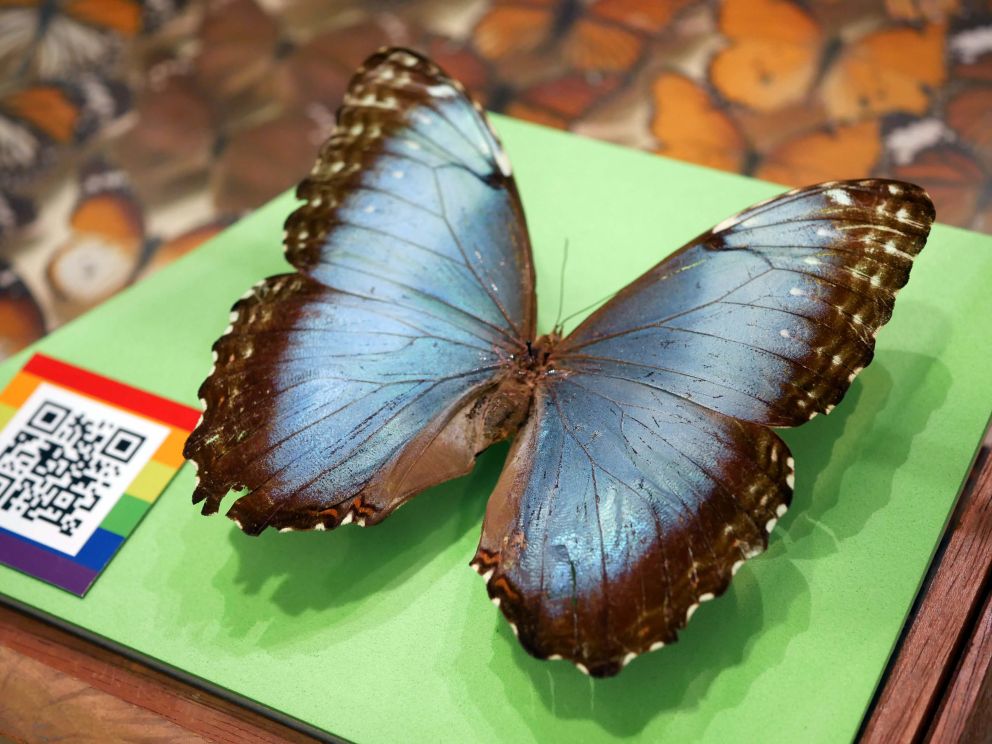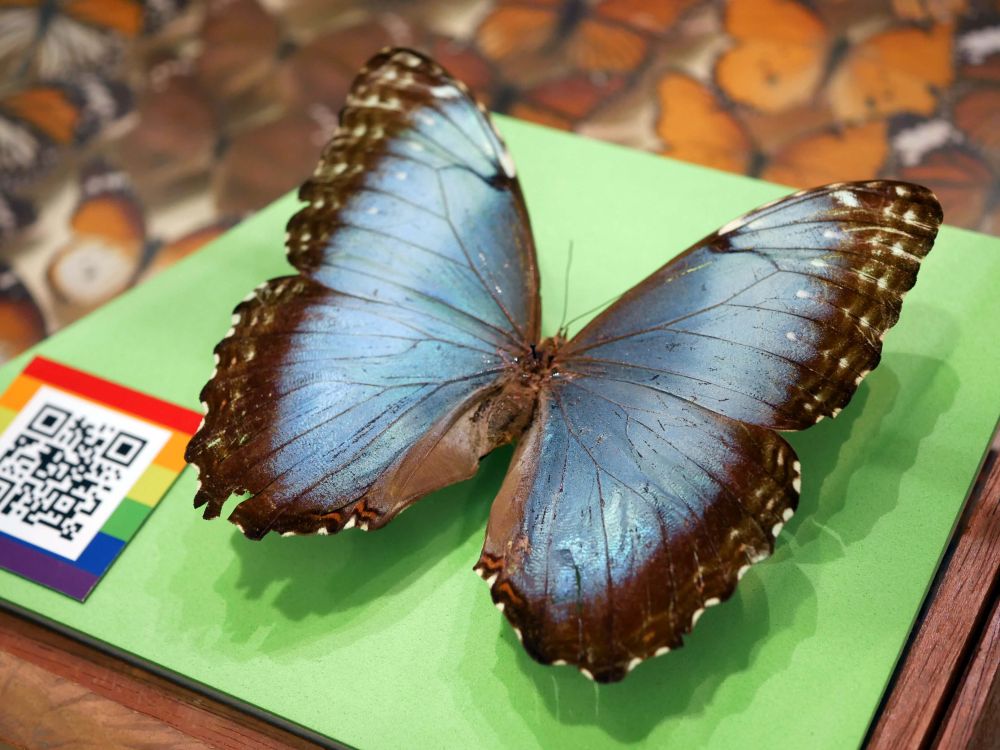Blue Morpho Butterfly
Morpho peleides - nature’s loopholes and non-binary creatures

The Blue Morpho butterfly has a wingspan of five to eight inches making it one of the largest butterflies in the world. It can be found fluttering along bodies of water and through the rainforests of South America.
Due to the climate crisis and the fact that the Blue Morpho cannot exist in other habitats, the rainforests must be protected to preserve the species. Like many species, the role they play in the ecosystem is key and with the unique qualities they possess, this Amazonian beauty is truly irreplaceable.
One such unique quality is how commonly the Blue Morpho manifests as Non-Binary, both biologically (like someone who is intersex) and physically (like someone who is androgynous or has vitiligo).
Read More 

Nipam Patel
Top left, a male blue morpho butterfly; top middle, a female. The remainder are gynandromorphic, with both male and female characteristics.
Credit: Nipam H. Patel
Read More 

Queer Six-Legged Superhero
The male-presenting morphos are known for their beautiful blue colour, which is in fact an iridescence on their wings, whereas the female-presenting butterflies, tend to be a less striking dark yellow, brown or black colour.
In insects and animals such as the Blue Morpho, specimens that contain both male and female cells are known as ‘gynandromorphs’, which in humans would be referred to as ‘intersex’. The resulting combination of male and female cells can be observed through the segmenting of colours associated with either sex on their wings, or occasionally through a ‘Mosaic Wing’ in which their wings are a mixture of the two.
As much as this would be considered rare, at least for the Blue Morpho, it’s not, being seen more commonly than many other species. Nature does not have the same social constraints or biological preconceptions that we form around people, with nature often acting beyond the binary.
“Mammals have X and Y chromosomes, birds and insects have Z and W, and some reptiles can change their sex depending on temperature, or a combination of temperature and sex chromosomes.” - Jennifer Marshall Graves
Scientists say these instances of split-sex animals and insects could offer clues to why some human diseases affect one sex more than the other, making the Blue Morpho a true, queer, six-legged Superhero!
Read More 

Support Torquay Museum
Did you know that whenever you buy anything online – from your weekly shop to your annual holiday – you could be raising free donations for Torquay Museum with easyfundraising? Find out how!
Stay Connected with Our Newsletter
Be the first to hear our latest news by signing up to our newsletter. Also don't forget to follow us on social media - @torquaymuseum.
















